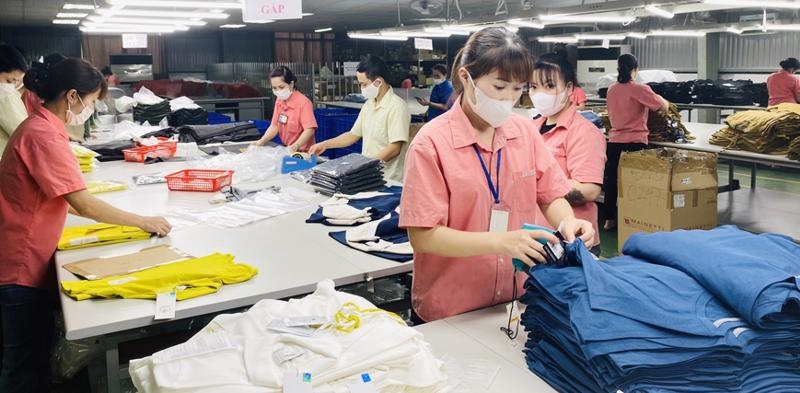 |
| Mr. Vu Duc Giang, VITAS Chairman (Photo: daibieunhandan.vn) |
Market trends and challenges
According to Mr. Vu Duc Giang, Chairman of the Vietnam Textile and Apparel Association (VITAS), the garment and textile market has shown more positive growth since the beginning of 2024 compared to 2023. The textile industry aims to achieve USD44 billion in exports in 2024. As of May 2024, the export turnover of textiles reached over USD15.8 billion, an increase of 4.3% compared to the same period in 2023.
The gradual warming of the Vietnamese textile market is attributed to key markets such as the US and Europe controlling inflation, leading to a recovery in consumer purchasing power.
Ms. Nguyen Thi Tuyet Mai, Deputy General Secretary of VITAS, emphasized that the recovery pace of Vietnam's textile industry is swift, with orders booked through the third quarter and the end of 2024.
However, manufacturing companies are facing many challenges, such as increasing customer demands, low processing prices and fast delivery requirements. Additionally, e-commerce is becoming increasingly popular among consumers, and the demand for diverse products is rising. Major markets like Europe and the US are tightening requirements for green production, sustainable development and green energy.
Vietnam's textile industry is also under significant pressure to recruit labor. Currently, the industry is short of 500,000 workers, especially those with high technical skills and management capabilities.
 |
| Illustrative photo (Source: vneconomy.vn) |
Solutions for Vietnam's textile industry
Vietnamese textile companies need to restructure, optimize production processes, apply new technologies in production stages and further improve product quality and production capacity. Besides reducing costs and shortening production times, businesses should focus on selecting environmentally friendly materials that align with the circular economy trend.
Businesses also need to diversify their markets and customers; be flexible and ready to meet the diverse demands of new customers to maintain long-term growth.
To adapt to new market trends, companies must implement synchronized solutions, including innovating production lines, gradually replacing old machinery with automated equipment to enhance productivity and product quality.
Additionally, companies are gradually shifting their investments toward product design to meet customer demands for smaller but higher-value orders. Vietnam's textile industry has significant development potential in the future. However, to capitalize on this potential, businesses need to proactively adapt to market changes, innovate technology, and improve product and service quality to meet the increasing demands of customers./.